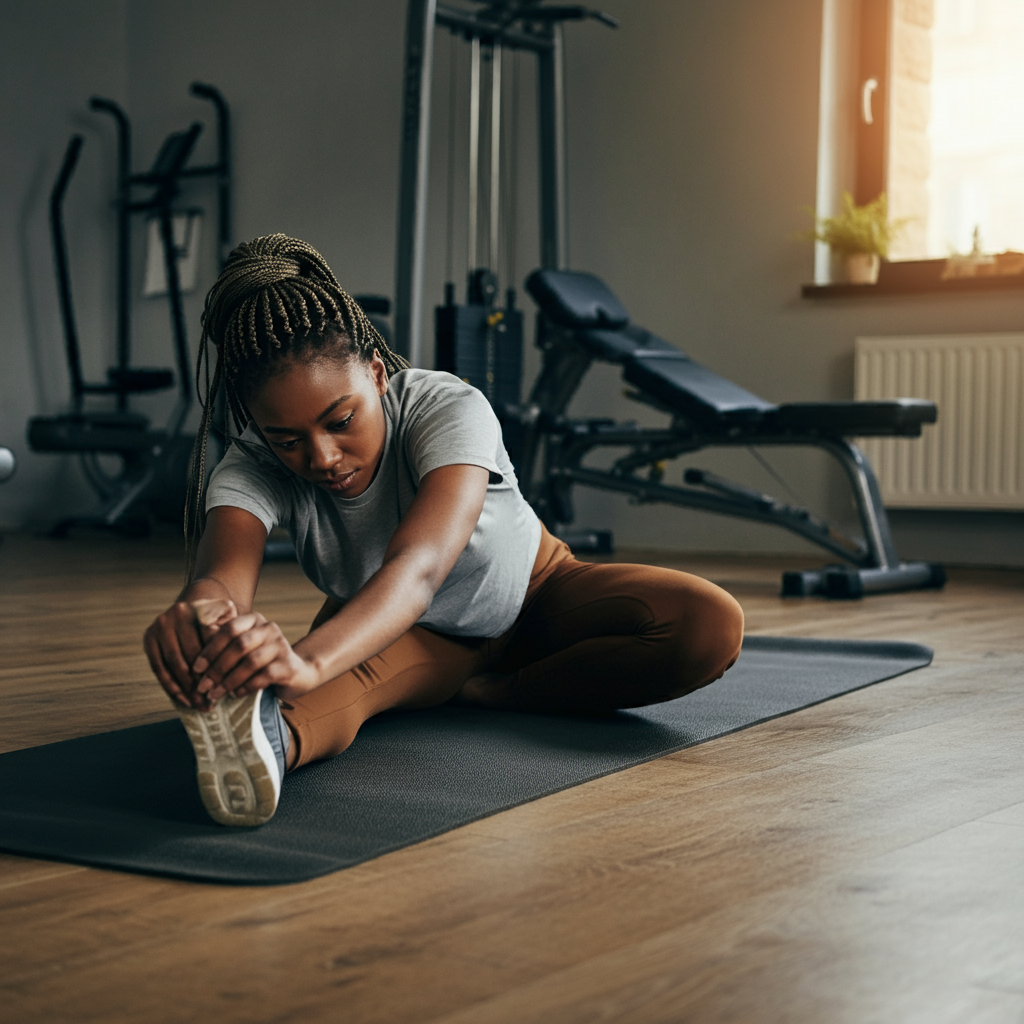Blog
Best Fitness Exercises for Women with Fibroids
Best Fitness Routines for Women with Fibroids: A Comprehensive Guide
Fibroids, no-cancerous tumors in the uterus, can significantly impact a woman’s quality of life. While medical treatments are often the first line of defense, incorporating a suitable fitness routine can also alleviate symptoms, improve overall health, and boost energy levels. Let’s check out some of the best fitness routines for women with fibroids:

Understanding the Benefits of Exercise for Women with Fibroids
Regular physical activity offers numerous advantages for women diagnosed with fibroids:
- Pain Relief: Exercise can help reduce pelvic pain and menstrual cramps associated with fibroids.
- Reduced Symptoms: Regular workouts can alleviate other symptoms like heavy bleeding, pressure, and fatigue.
- Improved Mood: Physical activity is known to boost mood and reduce stress, which can positively impact overall well-being.
- Weight Management: Maintaining a healthy weight can help manage hormone levels, potentially reducing fibroid growth.
- Enhanced Energy Levels: Consistent exercise can increase energy levels and combat fatigue.
Best Fitness Routines for Women with Fibroids
While all forms of exercise are beneficial, certain types are particularly suitable for women with fibroids:
1. Low-Impact Aerobic Exercises
- Walking: A simple yet effective way to stay active, walking can be done at your own pace and intensity.
- Swimming: The low-impact nature of swimming makes it ideal for women with joint pain or back discomfort.
- Cycling: Stationary or outdoor cycling offers a great cardiovascular workout without putting excessive strain on the body.
- Water Aerobics: Water-based exercises provide gentle resistance, reducing stress on joints while improving flexibility and strength.
2. Strength Training
- Weightlifting: Incorporating strength training exercises can help build muscle mass, improve bone health, and boost metabolism.
- Yoga: Gentle yoga poses can alleviate stress, improve flexibility, and strengthen core muscles.
- Pilates: This low-impact exercise focuses on core strength, posture, and flexibility, which can be particularly beneficial for women with pelvic pain.
Tailoring Your Workout Routine to Your Specific Needs
To maximize the benefits of exercise and minimize discomfort, consider these additional factors:
- Intensity: Start with low-intensity workouts and gradually increase the intensity as your fitness level improves.
- Duration: Aim for at least 30 minutes of moderate-intensity exercise most days of the week.
- Frequency: Consistency is key, so try to exercise regularly, even if it’s just for a short duration.
- Variety: Incorporating a variety of exercises can help prevent boredom and keep your workouts challenging.
Additional Tips for Women with Fibroids
- Consult Your Doctor: Before starting any new workout regimen, consult your healthcare provider to ensure it’s safe and appropriate for your specific condition.
- Listen to Your Body: Pay attention to your body’s signals and avoid overexerting yourself.
- Start Slowly: Begin with gentle exercises and gradually increase the intensity and duration as your fitness improves.
- Stay Hydrated: Drink plenty of water before, during, and after your workout to prevent dehydration.
- Wear Comfortable Clothing: Choose loose-fitting, breathable clothing that allows for easy movement.
- Consider a Pelvic Floor Physical Therapist: A pelvic floor physical therapist can provide personalized exercise recommendations and techniques to strengthen pelvic floor muscles.
- Mindful Movement: Incorporate mindfulness techniques like yoga or meditation into your routine to reduce stress and improve overall well-being.
- Track Your Progress: Keep a workout journal to monitor your progress and stay motivated.
- Find a Workout Buddy: Having a workout partner can help you stay accountable and make exercise more enjoyable.
- Experiment with Different Activities: Don’t be afraid to try new activities like dancing, swimming, or hiking to find what you enjoy most.
- Prioritize Rest and Recovery: Allow your body ample time to rest and recover between workouts.
- Set Realistic Goals: Set achievable fitness goals and celebrate your milestones.
- Stay Positive: Maintain a positive mindset and focus on the benefits of exercise.
- Seek Support: Join a support group or online community to connect with other women who are dealing with fibroids.
Common Challenges and How to Overcome Them
- Fatigue: If you’re feeling fatigued, start with shorter workouts and gradually increase the duration.
- Pain: If you experience pain during exercise, stop and rest. You may need to modify your routine or consult your doctor.
- Lack of Motivation: Find a workout buddy, join a fitness class, or listen to motivating music to stay motivated.
- Time Constraints: Incorporate short bursts of exercise throughout the day, such as taking the stairs instead of the elevator or going for a brisk walk during your lunch break.
The1 Role of Nutrition in Managing Fibroids
A healthy diet can complement your fitness routine and help manage fibroid symptoms. Here are some nutritional tips:
- Consume a Balanced Diet: Focus on whole grains, fruits, vegetables, lean proteins, and healthy fats.
- Limit Processed Foods and Sugary Drinks: These can contribute to inflammation and weight gain.
- Consider a Plant-Based Diet: Some studies suggest that a plant-based diet may help reduce fibroid growth.
- Stay Hydrated: Drink plenty of water to keep your body hydrated and support optimal organ function.
- Consult a Registered Dietitian: A registered dietitian can provide personalized dietary advice based on your specific needs.
The Power of Mind-Body Connection
In addition to physical exercise, incorporating mind-body practices can further enhance your well-being:
- Yoga and Meditation: These practices can help reduce stress, improve sleep, and promote overall relaxation.
- Deep Breathing Exercises: Deep breathing can help calm the mind and reduce anxiety.
- Mindful Eating: Pay attention to your body’s hunger and fullness cues to avoid overeating.
By incorporating a well-rounded fitness routine into your lifestyle, you can experience significant improvements in your overall health and well-being. Remember to listen to your body, and consult with your healthcare provider. There’s no need to suffer in silence. With consistent effort and a positive mindset, you can overcome the challenges associated with fibroids and live a fulfilling life.



















